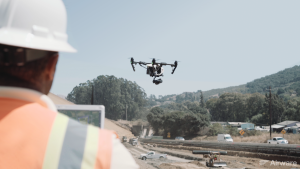The Government Accountability Office (GAO) has launched a report suggesting that the FAA wants to enhance its administration of security dangers for drones.
The 92-page doc, revealed in response to rising concern in Congress and different authorities companies over the unsafe use of drones, says that the FAA lacks good knowledge on drone security and doesn’t go far sufficient in “following key principles of risk management.”
Lack of Reliable Data
The report says that the present knowledge obtainable on recognized drone dangers – i.e., “sightings” that point out drones are flying to shut to manned plane or “incidents” – are unreliable. FAA says, GAO experiences, that “most of the reports cannot be verified,” and that experiences are not often validated or investigated. Additionally, the FAA acknowledges that many of the experiences could not truly point out {that a} drone was flying unlawfully.
The report additionally factors out that different entities, just like the AMA and the Bard College Center for the Study of the Drone, attain totally different conclusions concerning the quantity of vital incidents when analyzing the identical knowledge.
“FAA officials told us that they are aware that the agency’s data on potential unsafe use of small UAS have limitations,” says the report; and the company is “making efforts” to enhance the standard of data.
Risk Management Principles
That lack of dependable knowledge signifies that the FAA solely “partially follows” threat administration ideas. “… FAA’s policy on safety risk management requires FAA to follow a process for managing risk that includes identifying hazards; analyzing and assessing associated safety risks; and developing and monitoring safety risk controls to reduce the risks to an acceptable level,” says the report.
When it comes to breaking down the duties concerned in precisely “analyzing and assessing associated safety risks” and “monitoring safety risk controls” the FAA’s lack of dependable incident knowledge signifies that they don’t get full marks. That’s vital for the drone trade, as a result of it signifies that the FAA could also be writing new rules based mostly on incomplete data.
Conclusion
“FAA’s actions to expand the safe use of small UAS in the national airspace system have helped enable an increase in the number of commercial and recreational uses,” the report concludes. “…However, FAA’s ability to perform effective safety oversight is limited by FAA’s lack of reliable data on unsafe use of small UAS and deficiencies in FAA’s risk management approach.”
Miriam McNabb is the Editor-in-Chief of DRONELIFE and CEO of JobForDrones, an expert drone providers market, and a fascinated observer of the rising drone trade and the regulatory surroundings for drones. Miriam has a level from the University of Chicago and over 20 years of expertise in excessive tech gross sales and advertising and marketing for brand spanking new applied sciences.
Email Miriam
TWITTER:@spaldingbarker
 Unmanned Aerial Vehicle The latest drone news
Unmanned Aerial Vehicle The latest drone news






